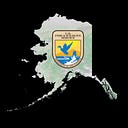Arctic Refuge Virtual Bird Fest
“Tshcick-a-dee-dee” Chickadees
Sounds and songs from the northern forests
Has a song ever brought you back to a place? If you’ve spent time in northern forests, the songs of the chickadee might.
“Tschick-a-dee-dee”
Chickadees have a complex repertoire of songs for different situations (aggression, courtship, food begging, warning, alarm etcetera). Perhaps the most recognizable of their calls resemble the bird’s namesake — it sounds like tschick-a-dee-dee, chickadee-dee-dee, or tseek-adee-dee said in varying degrees of raspy hoarseness. Additional -dees may be added when alarmed.
“Chickadee is an example of onomatopoeia: the formation of words that imitate natural sounds.
Their other calls include fee-bee (or hey, sweetie), gargles, twitters, trills, one-syllable chirps, squeals, and explosive hisses.
Ch’idzigyaak
Chickadees are found across the Arctic, and different languages and dialects reflect this.
Examples of what the Gwichʼin people of Alaska and Canada call these small birds with a dark crown and throat patch include Ch’idzigyaak (Alaska) or Ch’idzigyek (Yukon Territory).
“Ch’idzigyek shìk ch’idlìi j1ihtth’ak”
I always hear chickadees singing.
In northwest Alaska, the Inupiaq people know these birds as iknisailaq (boreal chickadee) and misikaaġaq (black-capped chickadee). And in Yupik, the chickadee’s voice translates to cikepiipiiq (also the Yupik name for the bird itself).
Uksullaq, the Alutiiq word for the black-capped chickadee, means “winter one” — a nod to their year-round presence and cold hardy abilities. [see: There’s No Place Like Home — even at 40 Below: a bird’s guide to surviving the Arctic Winter]
In Cherokee, tsigili’i.
Do you have other words or variations of the words above for chickadees? We’d love to hear from you. Please share with us (connect at www.arcticbirdfest.com).
Alaska is home to four of the seven North American chickadees: the black-capped, chestnut-backed, boreal, and gray-headed.
Gray-Headed Chickadees
The rarest and northernmost chickadee, the only known North American breeding population of grey-headed chickadees resides in Arctic National Wildlife Refuge.
The Refuge lists this bird as a resource of concern — much about it and its population status is unknown. According to Paul Leonard, an Ecologist at Arctic National Wildlife Refuge, this understudied bird has become increasingly scarce and hard to find.
“Arctic Refuge might be the last stronghold for this species, especially in the eastern part of the state.”
Refuge biologists hypothesize that climate change may be impacting this bird in several ways including changing interactions with boreal chickadees (competition for nest cavities and hybridization).
Boreal Chickadees
A hardy, permanent resident in spruce forests mostly north of the Canadian border, this dusty-looking chickadee tends to be quiet and inconspicuous during the nesting season.
Chestnut-Backed Chickadee
This smallest chickadee of all can be found in the dense, wet spruce, hemlock, and tamarack forests of the Pacific coast from southcentral Alaska down to southwestern California. Inland, it may overlap in range with up to three other close relatives; but in the very humid coastal belt it tends to be the only chickadee present.
Black-Capped Chickadees
Widespread and common, this fan favorite enlivens the woods over a large swath of Alaska, Canada, and the northern United States.
Tip: Watch and listen for chickadee flocks during fall and spring — small, interesting migrating songbirds in unfamiliar territory often key into these flocks.
Arctic Refuge Virtual Bird Festival:
https://www.arcticbirdfest.com/ #ArcticBirdFest
Katrina Liebich is the Alaska Digital Media Manager for the U.S. Fish and Wildlife Service. Thank you to Aaron Lang for his review.
In Alaska we are shared stewards of world renowned natural resources and our nation’s last true wild places. Our hope is that each generation has the opportunity to live with, live from, discover and enjoy the wildness of this awe-inspiring land and the people who love and depend on it.
